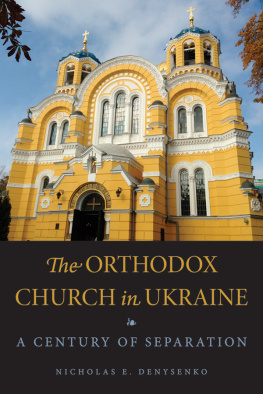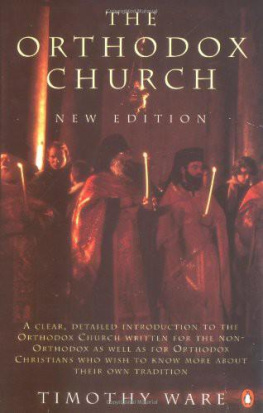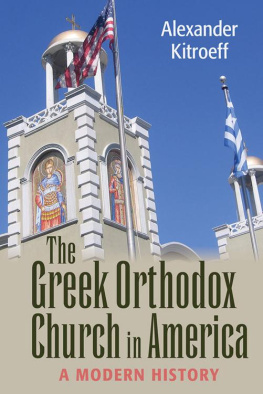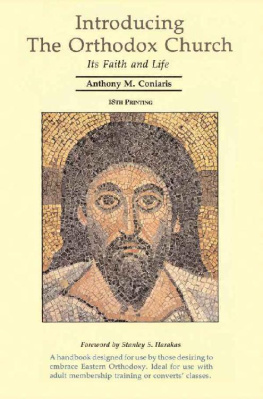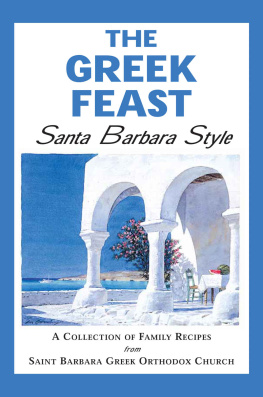Katherine Clark - Orthodox Church
Here you can read online Katherine Clark - Orthodox Church full text of the book (entire story) in english for free. Download pdf and epub, get meaning, cover and reviews about this ebook. year: 2009, publisher: Kuperard, genre: Religion. Description of the work, (preface) as well as reviews are available. Best literature library LitArk.com created for fans of good reading and offers a wide selection of genres:
Romance novel
Science fiction
Adventure
Detective
Science
History
Home and family
Prose
Art
Politics
Computer
Non-fiction
Religion
Business
Children
Humor
Choose a favorite category and find really read worthwhile books. Enjoy immersion in the world of imagination, feel the emotions of the characters or learn something new for yourself, make an fascinating discovery.

- Book:Orthodox Church
- Author:
- Publisher:Kuperard
- Genre:
- Year:2009
- Rating:3 / 5
- Favourites:Add to favourites
- Your mark:
- 60
- 1
- 2
- 3
- 4
- 5
Orthodox Church: summary, description and annotation
We offer to read an annotation, description, summary or preface (depends on what the author of the book "Orthodox Church" wrote himself). If you haven't found the necessary information about the book — write in the comments, we will try to find it.
Orthodox Church — read online for free the complete book (whole text) full work
Below is the text of the book, divided by pages. System saving the place of the last page read, allows you to conveniently read the book "Orthodox Church" online for free, without having to search again every time where you left off. Put a bookmark, and you can go to the page where you finished reading at any time.
Font size:
Interval:
Bookmark:
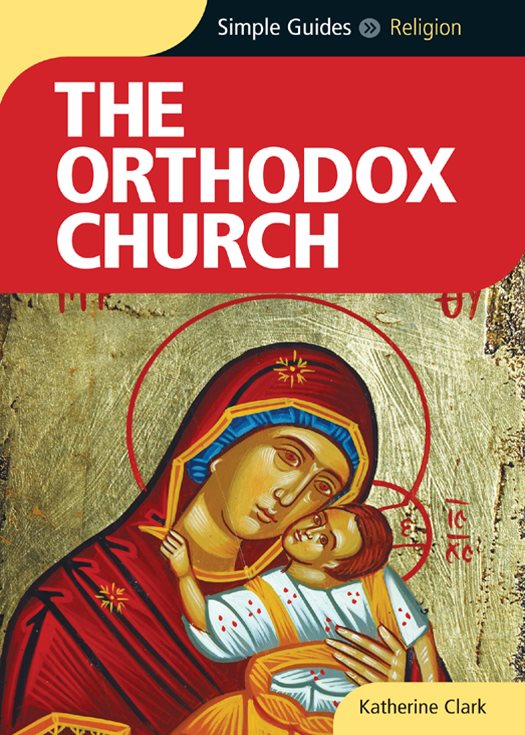
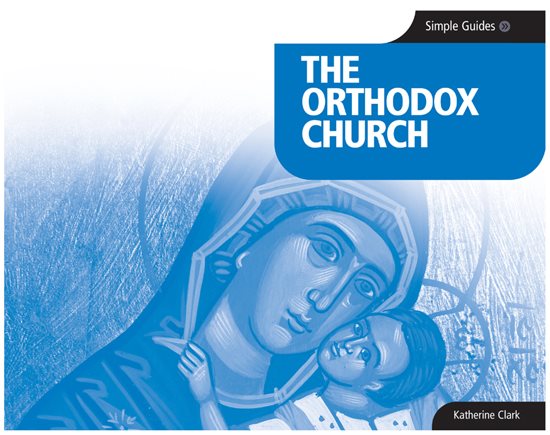

Published in Great Britain by
Kuperard, an imprint of Bravo Ltd
59 Hutton Grove, London N12 8DS
www.kuperard.co.uk
Enquiries:
Copyright 2009 Bravo Ltd.
All rights reserved. No part of this publication may be reproduced, stored in a retrieval system, or transmitted in any form or by any means without prior permission in writing from the Publishers
eISBN: 978-1-85733-640-5
British Library Cataloguing in Publication Data
A CIP catalogue entry for this book
is available from the British Library
Cover image: Orthodox icon, Rhodes,
Greece. Rcaucino, Dreamstime.com
Illustrations by
Panayiotis K. Koumoundouros
The photograhs ,
are reproduced
by permission of the author.
Photograph Elizabeth Carson
Images Jjensen, and
Massimo Finizio
v3.1
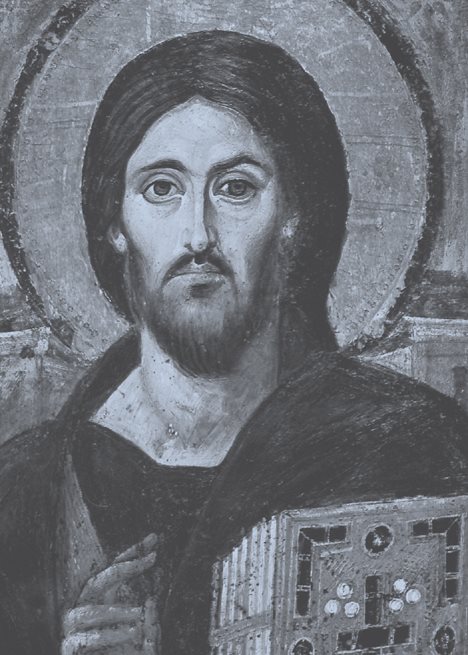
Christ Pantocrator, Ruler of all. Sixth-century icon, St Catherines Monastery, Sinai
At the time I first encountered Orthodoxy, I had had no connection with any religion whatever for decades. Raised Presbyterian as a child, I was at first put off by Orthodox practices like kissing icons, and was shy of the clergy, who appeared so awesome and so stern. I found almost everything about Orthodoxy strange, even intimidating the ornate surroundings, the unfamiliar objects, the medieval clerical garb, the highly formal services, the language, the incense.
But as I grew to know the often tiny, intimate churches, the non-judgemental, helpful and insightful clergy, and the Orthodox believers themselves and their all-pervading relationship with their religion, I came to love this Church. Ironically, what particularly attracted me, a professional wordsmith, were its many unspoken, unwritten languages: the symbolism, the artwork, the ritual, the traditions, the objects with their special significances, the physical gestures of the laity and clergy: these expressed things that words never could. These are the languages of the logos, religious meaning, and I believe they are the truest medium for worshipping and communicating with God. Especially the icons at first so cool and remote came to speak to me.
As for actual language, the words of the Liturgy and other services and the Bible, particularly the Psalms, expressed far better than my own what I wished to say to my Lord; and they instructed me far better than any sermon. As I began to use Orthodox prayers and hymns regularly, they opened up ever profounder meanings to me.
Finally, the Orthodox Churchs very antiquity and unchanging practices convinced me of the depth and universality of its message, and of its power as a vehicle for worship. The Churchs lack of hierarchy, organisation or even consistency only persuaded me the more. It really is the Holy Spirit, and no human institution, who guides the Orthodox Church and holds it together.
KATHERINE CLARK
This book aims to help Western readers to gain enough insight into the Greek Orthodox Church (and by extension the Eastern Orthodox Church generally) to put them at ease in Orthodox churches, explain what they see, and give them an idea of what is going on there. It assumes that the reader is new to Orthodoxy and may even know little of Christianity generally. Focus is on the essential: what absolutely cannot be left out of any picture of Orthodoxy. The physical church, especially icons, services and common practices are explained, and suggestions are offered to visitors on how to conduct themselves appropriately, so that they are well accepted and feel comfortable.
Several chapters concern the life of Jesus and the beginnings of Christianity. The origins and history of the Church are pursued to the point at which it more or less assumed its present form, with particular attention to its great champion, Constantine the Great. The early centuries of Christianity are stressed because they are largely unfamiliar in the West, and also because Orthodoxy has remained essentially unchanged since then, with the original faith intact.
The book outlines the tenets, nature and holy days of Orthodox belief with the Western reader in mind. The present structure of the Church is described in brief. Finally, the split between the Eastern Church and the Western Church is related and their differences explained in simple terms.
For more detailed information about Orthodoxy and Byzantine history, I especially recommend Metropolitan Kallistos Wares excellent books, The Orthodox Church and The Orthodox Way. I also recommend A History of God, by Karen Armstrong; Pagans and Christians, by Robin Lane Fox; Byzantium, by John Julius Norwich; History of the Byzantine State, by George Ostrogorsky; The Byzantine Theocracy, by Steven Runciman; The Divine Liturgy Explained, by Rev. Nicholas M. Elias; The Holy Sacraments for Orthodox Christians, by Bishop Valerian D. Trifa; and, in German, Konstantin der Grosse und seine Zeit, by Manfred Clauss; Die Kirchenvter und ihre Zeit, by Hartmut Leppin; Byzanz, by Ralph-Johannes Lilie; Kunst und Liturgie der Ostkirche in Stichworten unter Bercksichtigung der Alten Kirche, by Konrad Onasch; and Geschichte des Frhen Christentums, by Friedhelm Winkelmann. These, along with my personal experience, are the sources of the information here.
Old Testament quotations are from the Septuagint, the English translation by Sir Lancelot Charles Lee Brenton (first published in 1844). New Testament quotations are from the King James version of the Bible.
My warmest thanks for well-informed and active assistance to those fine writers and good friends Willard Manus and Jeffrey Carson, to Pfarrer Gerd Stauch, to my siblings in the faith Anastasia and Steven Charters, and, as in all I do, to my husband and mentor James A. Clark, sine qua non.
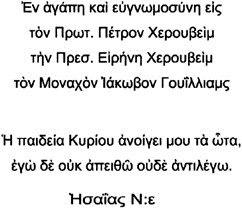
The instruction of the Lord God
opens my ears, and I do not disobey,
nor do I dispute.
Isaiah 50: 5
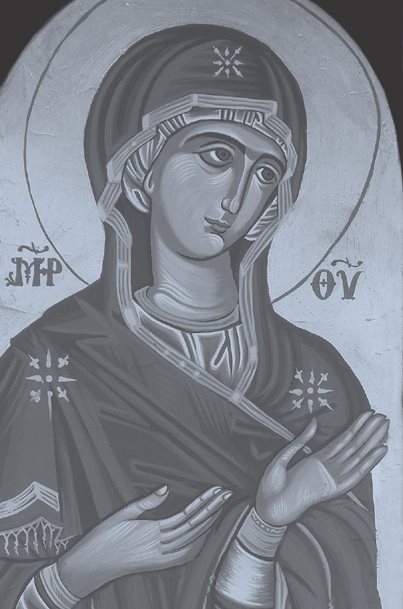
The Mother of God the Most Holy Theotokos and Ever-Virgin Mary. Contemporary Greek icon
The life of Jesus Christ and the events that immediately preceded and followed it are at the root of all Christian worship. Thus our account of the Eastern Orthodox Church is best begun with the Christian story.
What we know of Jesus life comes from the Gospels (from godspel in Old English: the good news) of SS Matthew, Mark, Luke and John in the New Testament of the Bible. These texts were written between about AD 60 and 80 that is, about thirty to fifty years after Jesus died. He was born to a Jewish family in Bethlehem in Judea, just southwest of Jerusalem, during the reign of the Roman Emperor Augustus, nominally in the first year of our era. Since our era begins with Christs birth, dates are preceded by AD , in Latin
Font size:
Interval:
Bookmark:
Similar books «Orthodox Church»
Look at similar books to Orthodox Church. We have selected literature similar in name and meaning in the hope of providing readers with more options to find new, interesting, not yet read works.
Discussion, reviews of the book Orthodox Church and just readers' own opinions. Leave your comments, write what you think about the work, its meaning or the main characters. Specify what exactly you liked and what you didn't like, and why you think so.

